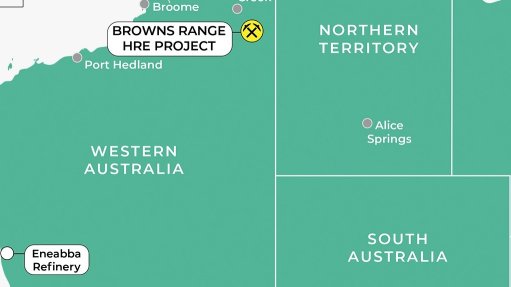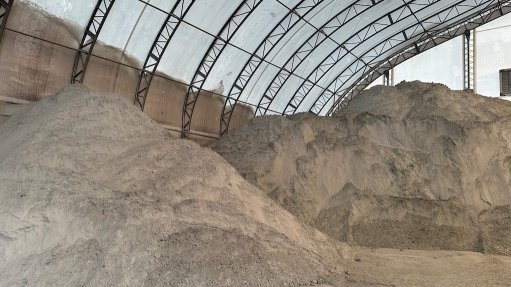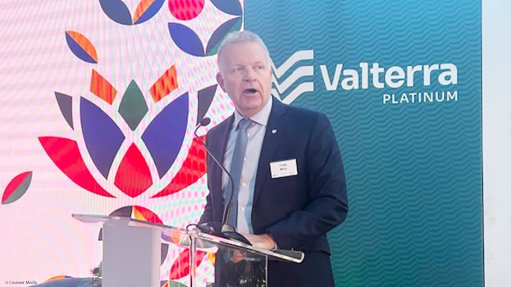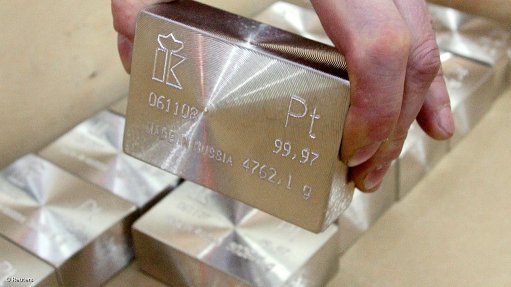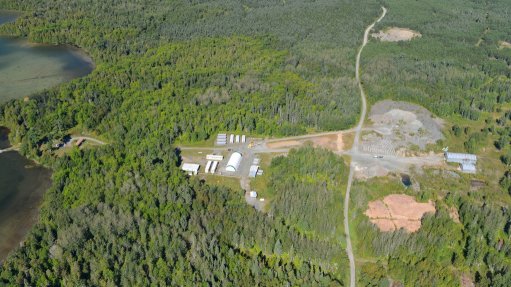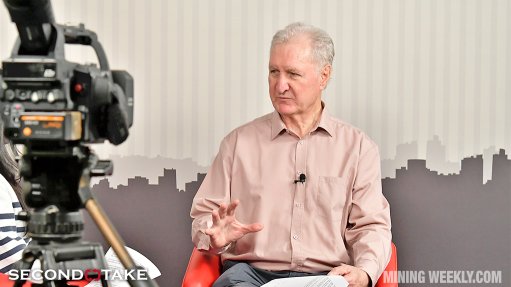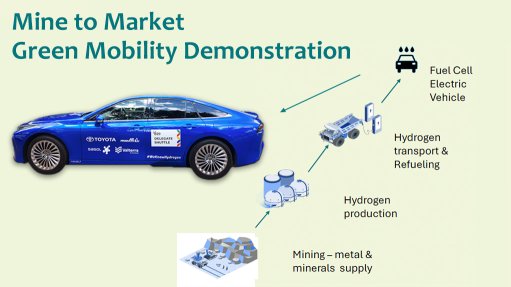Containerised wastewater treatment plant introduced
Wastewater solutions provider Organic Water Solutions (OWS) introduced its new containerised wastewater treatment plant, called the Cobra or Containerised Bio Reactor, onto the South African market in December 2012 and has completed one installation, with another currently under way.
OWS sold its first copyrighted containerised wastewater treatment plant in January to Stellenbosch-based wine farm Beyerskloof Winery. The system treats 10 000 ℓ of effluent a day.
“We began the project in mid-February and have completed the installation of the plant. The winery will use the plant to treat the effluent from the wine cellars and the sewage from a few of the toilets on the farm,” says OWS sales and marketing manager Luke Davidson.
The company is also installing another 10 000 ℓ/d plant at another wine farm called Olifantsberg, in Worcester, in the Western Cape.
“This plant will process waste from the cellar and sewage from the farm. We started the installation in the first week of March and are set to finish by the end of this month,” says Davidson.
He notes that it takes the company about two months to complete a project, which includes the manufacturing, transporting and installing of the system.
“Once we are on site, it takes about three days to excavate the ground and install the wastewater treatment plant,” he notes.
Davidson tells Engineering News that the system differs from other solutions on the market. It is containerised and has a five-step water-treatment system, which guarantees that water is treated according to general discharge standards in terms of the National Water Act, making it suitable for release back into rivers.
“Because the system is in a steel container, it qualifies as equipment and, therefore, buyers can get a 30% to 35% return on their purchase from the Department of Trade and Industry.
“Our containerised systems are also cost competitive – priced sometimes at half the cost of similar systems, with the same water-treatment capacity,” he says.
The treatment plant first screens waste- water to separate solids and liquids, after which it enters an anaerobic tank for solid settlement, fat separation and an esti- mated 40% chemical oxygen demand (COD) reduction.
This tank is seeded with an automated flow of OWS’ microdigestive organisms to boost digestion rates. From here the effluent continues to the first anoxic tank.
The water is then moved to an aerobic tank for continued denitrification, where it is treated with diffusers. “The remaining COD reduction predominately happens here,” notes Davidson.
From there, the water is transferred to a second anoxic tank where, he says, a small percentage of it circulates between the two anoxic tanks, allowing for complete nitrogen reduction.
Lastly, the water is clarified. Any settle- ment is sent back to the first anaerobic tank using a return-activated sludge pump.
“The system works with gravity, so there are no initial booster pumps to start the system and, therefore, it uses minimal electricity,” notes Davidson.
Before being released, the water is disinfected.
“The treated effluent can be discharged to a water course or used for the irrigation of landscaping, or pastures, provided the necessary Department of Water Affairs (DWA) authorisation has been obtained. The sun-dried sludge, which is pumped into drying beds, can be removed every three months and composted for use in landscape plants or pasture fertilising.
“This is the first time a large-scale wastewater treatment plant has been success- fully reduced to a containerised plant. Most packaged wastewater treatment units are fitted with a settlement phase, like a septic tank, which might include an anaerobic and aerobic phase. Some of the more efficient units may have a clarifica- tion phase, but very few have the anoxic phase and recirculation,” says Davidson.
The system can be used to treat industrial, agricultural and residential effluent and the company is looking to supply the mining industry.
“The system is adaptable and can be made to suit the mining industry, with a few small changes, such as adjusting the size of each chamber and each phase to suit the more acidic effluent produced by the sector,” says Davidson.
The treatment plant is avail- able in sizes suited to effluent flow rates of between 10 000 ℓ/d and 100 000 ℓ/d, at a cost of R315 000 to R965 000 respectively.
Davidson notes that the containerised steel option of OWS’s new wastewater treatment plant offering has many advantages, compared with the concrete masonry option traditionally offered.
“One of the challenges OWS and many of our African clients face is finding reliable contractors to build the masonry units. The containerised system eliminates the need for these contractors, as the steel units are manufactured at our Western Cape factory and more than one unit can be installed simultaneously.
“It is easily transported using ships and trucks, which elimi- nates major travel, accommodation and sourcing costs and delays such as those caused by rain,” he says.
The steel option can also be moved, if need be, as opposed to the masonry option, which is a permanent structure after installation, notes Davidson.
“Another challenge for many industries we work with is obtaining approval from the DWA through environmental- impact assessments before a water use licence is issued. This can take up to four years, but in the meantime, they are using water and producing waste illegally.
“For such situations, OWS provides a mobile containerised system on wheels or stilts,” he states.
Davidson notes that the company is investigating the introduction of rental packages for clients that want to rent units for temporary use at projects or when permanent wastewater treatment plants are undergoing repairs, which can sometimes take up to six months.
He adds that OWS is pitching to be part of a renewable-energy project, in the Eastern Cape, which comprises the construction of a wind farm that will provide energy to more than 1 000 houses.
“We would like to build the wastewater treatment plant for the project’s sewerage system. We are also presenting our ideas for a R100-million contract, which entails providing waste- water treatment plants for 27 hotels throughout Africa.
“OWS has also recently been introduced to an environmentalist, who is talking to us about our possible inclusion in a project for the treatment of acid mine drainage in Africa, which complements our intention of entering the mining industry,” Davidson concludes.
Article Enquiry
Email Article
Save Article
Feedback
To advertise email advertising@creamermedia.co.za or click here
Press Office
Announcements
What's On
Subscribe to improve your user experience...
Option 1 (equivalent of R125 a month):
Receive a weekly copy of Creamer Media's Engineering News & Mining Weekly magazine
(print copy for those in South Africa and e-magazine for those outside of South Africa)
Receive daily email newsletters
Access to full search results
Access archive of magazine back copies
Access to Projects in Progress
Access to ONE Research Report of your choice in PDF format
Option 2 (equivalent of R375 a month):
All benefits from Option 1
PLUS
Access to Creamer Media's Research Channel Africa for ALL Research Reports, in PDF format, on various industrial and mining sectors
including Electricity; Water; Energy Transition; Hydrogen; Roads, Rail and Ports; Coal; Gold; Platinum; Battery Metals; etc.
Already a subscriber?
Forgotten your password?
Receive weekly copy of Creamer Media's Engineering News & Mining Weekly magazine (print copy for those in South Africa and e-magazine for those outside of South Africa)
➕
Recieve daily email newsletters
➕
Access to full search results
➕
Access archive of magazine back copies
➕
Access to Projects in Progress
➕
Access to ONE Research Report of your choice in PDF format
RESEARCH CHANNEL AFRICA
R4500 (equivalent of R375 a month)
SUBSCRIBEAll benefits from Option 1
➕
Access to Creamer Media's Research Channel Africa for ALL Research Reports on various industrial and mining sectors, in PDF format, including on:
Electricity
➕
Water
➕
Energy Transition
➕
Hydrogen
➕
Roads, Rail and Ports
➕
Coal
➕
Gold
➕
Platinum
➕
Battery Metals
➕
etc.
Receive all benefits from Option 1 or Option 2 delivered to numerous people at your company
➕
Multiple User names and Passwords for simultaneous log-ins
➕
Intranet integration access to all in your organisation






